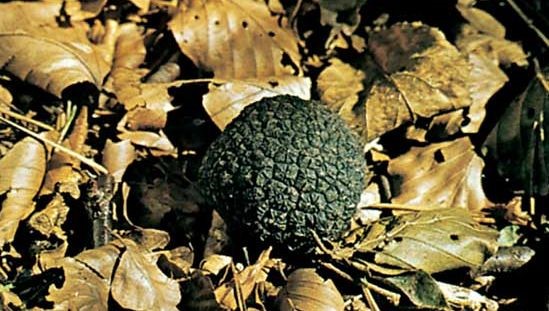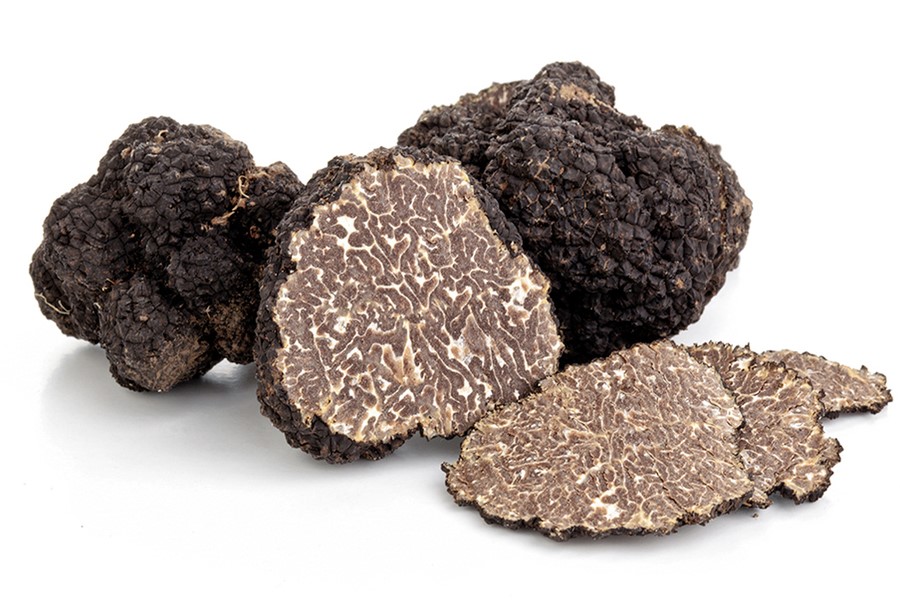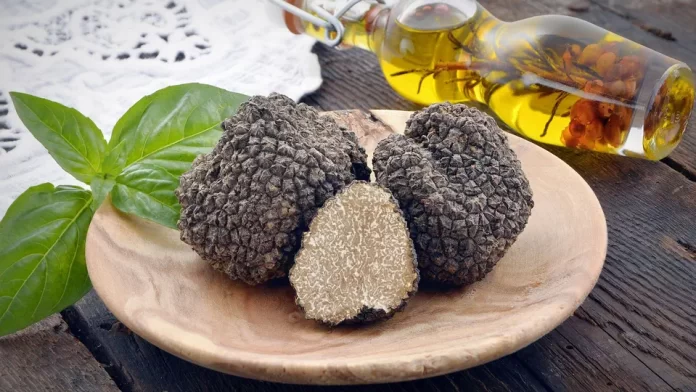What is truffle and why is it so expensive?
According to Britannica, Truffle is an edible subterranean fungus, prized as a food delicacy. True truffles fall in the genus Tuber (Order-Pezizales, Phylum-Ascomycota) and are native mainly to temperate regions. The different species of range in size from as small as a pea to the size of an orange.

The spore-producing fruiting body of a truffle is a spherical mass that forms below ground or at the soil surface. A section of a young specimen shows whitish, homogeneous flesh that, with age, becomes a rich dark color, showing a lighter marbling. The tuber spores are huge; an ascus, or spore sac, may contain one to four of them. Numerous truffle species contain volatile aromatics that might draw animals to spread their spores.
Subterranean fungi called savoury truffles are produced close to the roots of broadleaved trees like oak or hazelnut in calcareous soils. They are mostly produced in a few concentrated regions around the world, such as North Africa, the Middle East, France, Italy, New Zealand, China, and the Pacific Northwest.
The truffle is essentially regarded as a type of fungus because of its spore-bearing body. But there are some significant distinctions between these two groups. In particular, mushrooms normally grow above ground, but truffles grow beneath. Additionally, edible truffles have a distinct flavor that isn’t similar to any common mushroom, even if both share a certain type of earthy flavour.
Due to the fact that both truffles and mushrooms are fungi with fruiting bodies, most people just classify them as one and the same. By the way, the fungus’s fruiting body is where spores are produced. For instance, on a normal mushroom, the portion that emerges is the actual mushroom (i.e., the fruiting body), but the portion that grows underground is a fungus.
How are truffle grown?
On average, the growing procedure for truffles might take three to four years and frequently ends in failure. The first step is to inject certain fungal spores into young oak or hazelnut trees, spacing each tree apart from the other.
By attaching themselves to the tree roots, truffles grow underground along with the trees. The host trees and truffles coexist in a symbiotic connection throughout this time, with the truffles assisting the tree in obtaining phosphorus from the soil and the tree roots providing glucose to the developing truffles (Like mycorrhiza).
When it’s time to harvest, producers utilize trained pigs or dogs to detect the distinctive truffle odors. Truffle hunting is the mistly used term for this. On the other side, due to elements like climate, soil, and luck, some farmers end up with practically nothing.
It’s important to note that truffles can naturally grow in the wild. This happens when creatures remove the spores from truffles and poop them out, dispersing them elsewhere. Today, however, the truffle is typically unearthed by a human before an animal may eat it. After all, there is money to be made. Despite the lengthy wait times and inherent levels of uncertainty, new truffle farms keep popping up all over the world due to their potential for profit.
Truffles are typically found at depths of less than 30 cm (12 inches), making it challenging to find them on your own. When they reach their maximum size, truffles near the surface of the ground crack it, making them visible to skilled gatherers. Additionally, columns of little yellow flies may be seen hovering over a colony in the morning and evening. Truffle hunting is normally done with the help of trained dogs or female pigs (which are drawn to the fragrance of the truffles, which is similar to that of male pig pheromones), though occasionally a person who is sensitive enough to the scent of truffles may be able to detect them.
Although truffles are highly prized as a cuisine, commercial direct cultivation of truffles is challenging. Open-wooded areas with calcareous (chalky, calcium-rich) soil are ideal for growing truffles. They frequently cooperate with tree roots as part of a connection that benefits both parties (see mycorrhiza). Calcareous ground is excavated and seedlings are placed in order to grow truffles. Typically, light harrowing and plowing maintain the ground while spreading out the soil from truffle-producing areas. The trees are clipped and clearings are built three years later. While this is frequently left to nature, in other locations, the soil around suitable trees is infected with truffle spores. Truffles only start to appear after about 5 years; after that, gathering starts, but it is not really profitable until 8 or 10 years have passed. From five to twenty-five years later, the yield is at its highest.
You may like:
What are Truffles Like?
Despite the fact that there are many different kinds of truffles, most people are familiar with the broad categories of black truffles and white truffles. Black truffles frequently have rough, granular exteriors that resemble solid dirt clumps or even lumpy feces (depending on who you ask). In contrast, their interiors are far more appealing, resembling wagyu beef
in appearance.

On the outside, white truffles resemble a potato with a rough skin. On the inside, they have a somewhat different appearance but nevertheless have the same kind of marbling that black truffles do.
Some important species of truffle
The Périgord (Tuber melanosporum), which is the most expensive truffle in French cuisine, is thought to have achieved popularity near the end of the 15th century. It is spherical, brown or black, covered in polygonal wart-like protrusions with depressions at their summits, and has a brown or black flesh (gleba) that is initially white, then brown or gray, and finally turns black as it ages with white veins and brown margins. The smell is distinct and appealing.
The winter black truffle and the winter white truffle (T. magnatum) are two more species that are highly prized (T. melanosporum). The muscat black truffle, musky black truffle, Chinese black truffle, Himalayan black truffle, summer black truffle, and autumn black truffle are among the several gourmet truffles.
The beech woods are the main habitat of the summer black truffle, sometimes referred to as the English truffle (T. aestivum). The gleba is initially white when juvenile, then turns yellowish, and finally turns brown with white branching markings. It is blue black, spherical, and covered with coarse polygonal warts. There are numerous “fake truffles” in addition to “real truffles,” which are club fungi (Basidiomycota) and typically aren’t edible.

